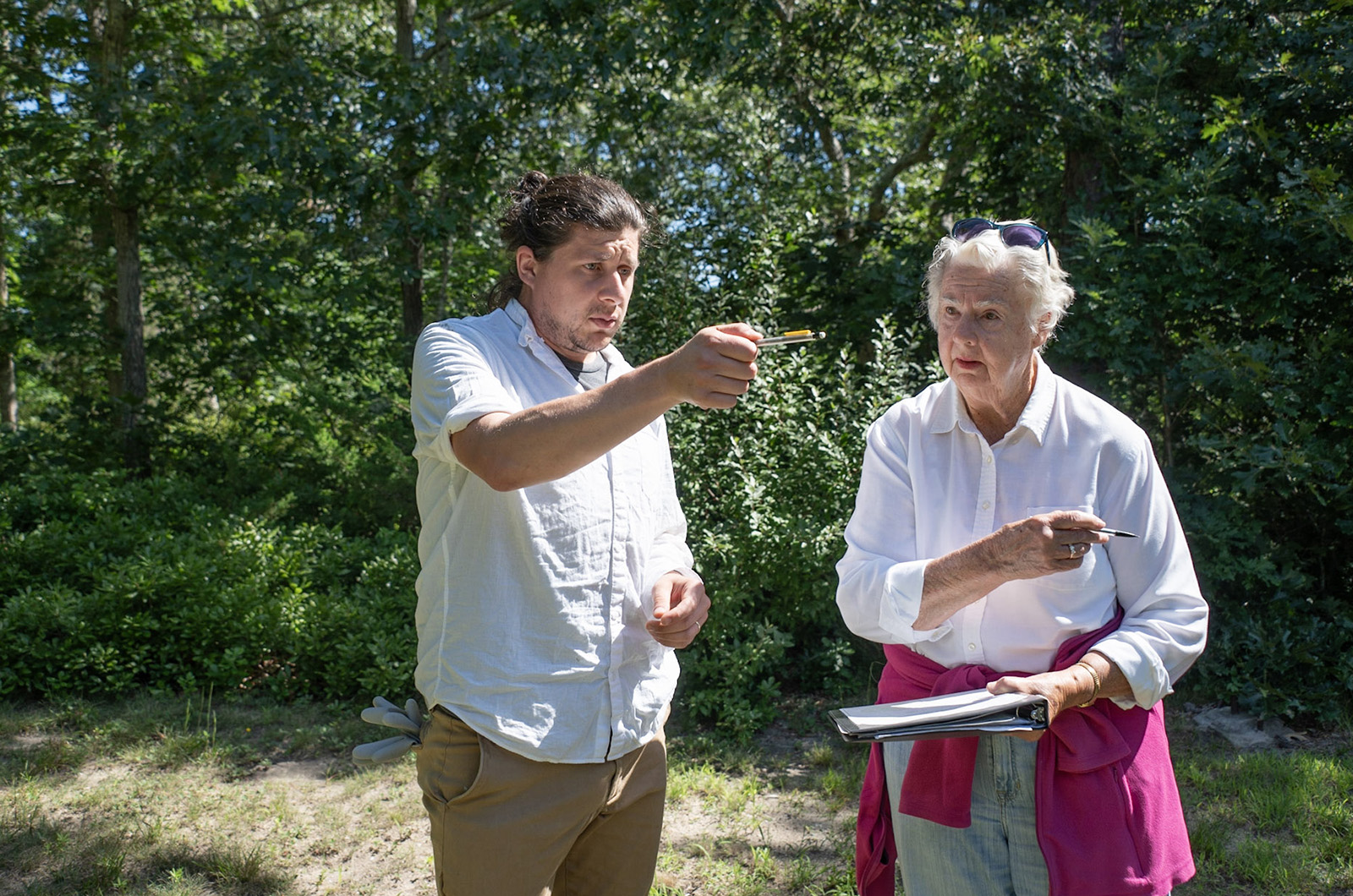In the late 19th century, New England Baptists gathered annually under a towering, open-air, octagonal tabernacle in the woods of East Chop, known then as the Highlands. The camp meetings drew hundreds to the Vineyard and established a community of devout Islanders whose history has since faded, much like the tabernacle itself.
One archaeologist is determined to uncover it.
What remains at Baptist Temple Park, where the tabernacle once stood not far from Shearer Cottage, are cement footings that Jeff Burnett, an archeology PhD candidate at Michigan State University, is using to map the area and chronicle the lives of Islanders past.
Since August 21, Mr. Burnett and a handful of local volunteers have been working in the park five days a week for eight hours a day to survey the footings, search for artifacts and document the comprehensive architectural structure of the property.
“I’m interested in [the tabernacle’s] position related to the pathways, how people would have been accessing it and how it connects to the historic neighborhoods and streets around it,” said Mr. Burnett.
Mr. Burnett began researching the park five years ago when he started his PhD program. In 2019, he ventured to the Island from his family’s home in Raynham to gauge the community’s interest in an archaeological dig, which he said is rarely done in vacation towns. He connected with people from the Martha’s Vineyard Museum, MV African-American Heritage Trail, East Chop Association and other individual history buffs who, like him, make a priority of preserving community origins.
The pandemic slowed his work, and with little time left in his program Mr. Burnett has had to forgo hopes of actually digging at the site. But the next best thing, he said, is to map the area using GPS technology and create a digital spread detailing its past.
“My goal is to increase people’s familiarity with archeology as a toolkit in general,” he said. “So even if in the end it’s not myself doing this work, I can lay the groundwork and it can be done in the future.”
When thinking about a tabernacle, most Islanders might imagine the one that still stands today in the Oak Bluffs Camp Ground and was built by Methodists in 1879. But it was the Baptist tabernacle that was built first in 1877, and ultimately inspired the Methodists to erect their own worship structure, Mr. Burnett said.
The property, he continued, was originally purchased by Methodists in 1869 who intended to develop it into a planned community called Vineyard Highlands. But when the economy took a downturn in the early 1870s, they sold the plot to Baptists from the Temple Baptist Church in Boston for a single dollar and a promise that they would hold at least three annual camp meetings on the Vineyard to increase community faith.
When the Baptists built their tabernacle in the Highlands, the Methodists followed.
“I was speaking to some people who are historians at the Camp Ground who say that the Methodists were just jealous of the permanent structure [the Baptists] built here,” said Mr. Burnett.
Eventually, when camp meetings became less popular, the Baptist tabernacle was abandoned and fell into disrepair. It was demolished in the late 1930s.
Baptist Temple Park is now owned by the East Chop Association, and many of the neighborhood’s residents have volunteered to help Mr. Burnett map the tabernacle.
“One of the most interesting things is that when they poured all the footings for [the tabernacle], they didn’t really level them all,” said volunteer and East Chop resident Fred Hancock, as he felt along the side of a concrete base. “And you can actually see that they ended up chipping away to recess the posts in them so it would be the right height.”
Mr. Hancock has a background in design and plans to use computer software to digitize the group’s findings. For now, he jots down notes on forms used by all of the volunteers to describe the footings’ shape, measurements, distance from each other and more.
“I already started drawing up some of this stuff last night,” he said.
Mr. Burnett plans to finish project in the next two to three weeks. Once he compiles the research, he will weave it into his dissertation on the Highlands community. He is currently brainstorming with Island groups to determine the best medium to share the information with the Vineyard.
“It’s still all kind of up for conversation, but the information that I have will be 100 per cent publicly accessible,” he said. “Archeology has a great way of questioning and challenging historical narratives... and it should be shared.”









Comments (2)
Comments
Comment policy »